Noninvasive, Individualized Cortical Modulation Using Transcranial Rotating Permanent Magnet Stimulator for Voiding Dysfunction in Women with Multiple Sclerosis: A Pilot Trial
- PMID: 34694911
- PMCID: PMC9724016
- DOI: 10.1097/JU.0000000000002297
Noninvasive, Individualized Cortical Modulation Using Transcranial Rotating Permanent Magnet Stimulator for Voiding Dysfunction in Women with Multiple Sclerosis: A Pilot Trial
Abstract
Purpose: Voiding dysfunction (VD) leading to urinary retention is a common neurogenic lower urinary tract symptom in patients with multiple sclerosis (MS). Currently, the only effective management for patients with MS with VD is catheterization. Transcranial Rotating Permanent Magnet Stimulator (TRPMS) is a noninvasive, portable, multifocal neuromodulator that simultaneously modulates multiple cortical regions and the strength of their functional connections. In this pilot trial (ClinicalTrials.gov Identifier: NCT03574610), we investigated the safety and therapeutic effects of TRPMS in modulating brain regions of interest (ROIs) engaged with voiding initiation to improve VD in MS women.
Materials and methods: Ten MS women with VD (having % post-void residual/bladder capacity [%PVR/BC] ≥40% or being in the lower 10th percentile of the Liverpool nomogram) underwent concurrent functional magnetic resonance imaging/urodynamic study (fMRI/UDS) with 3 cycles of bladder filling/emptying, at baseline and post-treatment. Predetermined ROIs and their activations at voiding initiation were identified on patients' baseline fMRI/UDS scans, corresponding to microstimulator placement. Patients received 10 consecutive 40-minute treatment sessions. Brain activation group analysis, noninstrumented uroflow, and validated questionnaires were compared at baseline and post-treatment.
Results: No treatment-related adverse effects were reported. Post-treatment, patients showed significantly increased activation in regions known to be involved at voiding initiation in healthy subjects. %PVR/BC significantly decreased. Significant improvement of bladder emptying symptoms were reported by patients via validated questionnaires.
Conclusions: Both neuroimaging and clinical data suggested TRPMS effectively and safely modulated brain regions that are involved in the voiding phase of the micturition cycle, leading to clinical improvements in bladder emptying in patients with MS.
Keywords: magnetic resonance imaging; multiple sclerosis.
Conflict of interest statement
Disclosure of Conflict of Interest: SAH is listed as an inventor on issued U.S. patent numbers 9456784, 10398907, 10500408 and 10874870 covering the device used in this study. The patent is licensed to Seraya Medical, LLC. Other authors declared no conflict of interest.
Figures


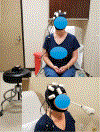
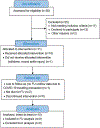
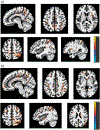
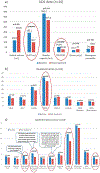
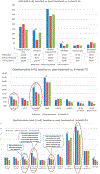
Comment in
-
Editorial Comment.J Urol. 2022 Mar;207(3):667-668. doi: 10.1097/JU.0000000000002297.01. Epub 2021 Nov 29. J Urol. 2022. PMID: 34842458 No abstract available.
-
TRPMS to improve voiding in patients with MS.Nat Rev Urol. 2022 Jan;19(1):4. doi: 10.1038/s41585-021-00554-1. Nat Rev Urol. 2022. PMID: 34887570 No abstract available.
Similar articles
-
Therapeutic effects of non-invasive, individualized, transcranial neuromodulation treatment for voiding dysfunction in multiple sclerosis patients: study protocol for a pilot clinical trial.Pilot Feasibility Stud. 2021 Mar 24;7(1):83. doi: 10.1186/s40814-021-00825-z. Pilot Feasibility Stud. 2021. PMID: 33757581 Free PMC article.
-
Predictors for outcomes of noninvasive, individualized transcranial magnetic neuromodulation in multiple sclerosis women with neurogenic voiding dysfunction.Continence (Amst). 2022 Dec;4:100517. doi: 10.1016/j.cont.2022.100517. Epub 2022 Oct 19. Continence (Amst). 2022. PMID: 36568960 Free PMC article.
-
Brain activation patterns of female multiple sclerosis patients with voiding dysfunction.Neurourol Urodyn. 2020 Mar;39(3):969-977. doi: 10.1002/nau.24304. Epub 2020 Feb 7. Neurourol Urodyn. 2020. PMID: 32032447 Free PMC article.
-
Management of neurogenic bladder in patients with multiple sclerosis.Nat Rev Urol. 2016 May;13(5):275-88. doi: 10.1038/nrurol.2016.53. Epub 2016 Mar 31. Nat Rev Urol. 2016. PMID: 27030526 Review.
-
Urodynamics and multiple sclerosis.Urol Clin North Am. 1996 Aug;23(3):475-81. doi: 10.1016/s0094-0143(05)70326-8. Urol Clin North Am. 1996. PMID: 8701560 Review.
Cited by
-
A 7-tesla study of cerebellar alterations relating to bladder control in women with multiple sclerosis voiding dysfunction using functional connectivity.Clin Neuroimaging (Hoboken). 2025;2(1):e70022. doi: 10.1002/neo2.70022. Epub 2025 Jun 26. Clin Neuroimaging (Hoboken). 2025. PMID: 40852051
-
Non-invasive central nervous system stimulation to improve bladder and pelvic floor function in the aging population.Curr Opin Urol. 2024 Nov 1;34(6):412-421. doi: 10.1097/MOU.0000000000001223. Epub 2024 Sep 4. Curr Opin Urol. 2024. PMID: 39233660 Free PMC article.
-
Voiding Phase Dysfunction in Multiple Sclerosis: Contemporary Review of Terminology, Diagnosis, Management, and Future Directions.Urol Clin North Am. 2024 May;51(2):177-185. doi: 10.1016/j.ucl.2024.01.005. Epub 2024 Mar 4. Urol Clin North Am. 2024. PMID: 38609190 Free PMC article. Review.
-
Evaluating noninvasive brain stimulation to treat overactive bladder in individuals with multiple sclerosis: a randomized controlled trial protocol.BMC Urol. 2024 Jan 25;24(1):20. doi: 10.1186/s12894-023-01358-8. BMC Urol. 2024. PMID: 38273296 Free PMC article.
-
Noninvasive brain stimulation in the treatment of functional urological and pelvic floor disorders: A scoping review.Neurourol Urodyn. 2023 Aug;42(6):1318-1328. doi: 10.1002/nau.25205. Epub 2023 May 20. Neurourol Urodyn. 2023. PMID: 37209294 Free PMC article.
References
-
- Panicker JN and Fowler CJ: Lower urinary tract dysfunction in patients with multiple sclerosis. Handb Clin Neurol 2015; 130: 371. - PubMed
-
- Stoffel JT: Contemporary management of the neurogenic bladder for multiple sclerosis patients. Urol Clin North Am 2010; 37: 547. - PubMed
-
- Fregni F and Pascual-Leone A: Technology insight: noninvasive brain stimulation in neurology-perspectives on the therapeutic potential of rTMS and tDCS. Nat Clin Pract Neurol 2007; 3: 383. - PubMed
Publication types
MeSH terms
Associated data
Grants and funding
LinkOut - more resources
Full Text Sources
Medical
Research Materials

